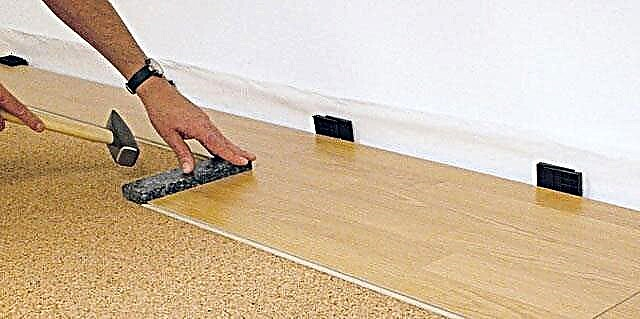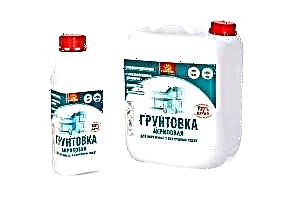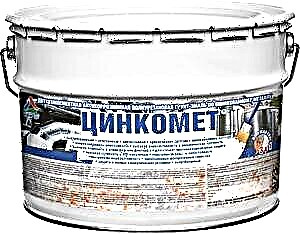 In order for the metal structures to serve within the period declared by the manufacturer, they must be treated with a special composition from corrosion. This procedure must be subjected to all structures, elements and parts that were made of metal. Although it has a fairly high strength, but still much more susceptible to the damaging effects of moisture in comparison with many other materials.
In order for the metal structures to serve within the period declared by the manufacturer, they must be treated with a special composition from corrosion. This procedure must be subjected to all structures, elements and parts that were made of metal. Although it has a fairly high strength, but still much more susceptible to the damaging effects of moisture in comparison with many other materials.
This means that immediately after the installation of metal structures, they must be protected from external factors. With regard to new designs, this problem is solved by priming and subsequent painting. But with the old metal, on which there are already emerging signs of rust, they act somewhat differently.
Types and protective properties
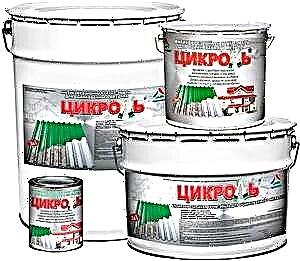 Modern primers are used for the sole purpose of preparing the surface for subsequent painting. Thanks to the primer, the adhesive characteristics of the surface increase, and this improves the adhesion of the paint to it. If we talk about primers for metal surfaces, then they have to not only play the role of the preparatory layer, but also take on the function of the primary protective barrier of the metal from the negative effects of the external environment. There are special types of primers applied in several layers, which can be used as a paint. These include primers, primers, enamels and primers.
Modern primers are used for the sole purpose of preparing the surface for subsequent painting. Thanks to the primer, the adhesive characteristics of the surface increase, and this improves the adhesion of the paint to it. If we talk about primers for metal surfaces, then they have to not only play the role of the preparatory layer, but also take on the function of the primary protective barrier of the metal from the negative effects of the external environment. There are special types of primers applied in several layers, which can be used as a paint. These include primers, primers, enamels and primers.
By the type of substance included in the primer, they can be classified into several types:
Rust primers differ among themselves and properties. Based on this feature, they can be divided into the following types:
- Passivators. The main component in the composition is the salts of chromic acid, which, upon contact with the metal surface, deprive it of its ability to enter into active interaction with oxygen, which makes its oxidation impossible. Such compositions mainly process metal structures, which are planned to be operated in conditions of high humidity.
 Protectors. Their basic component is paint or enamel containing dissolved tiny metal particles. After the primer dries, a thin, strong film appears on the surface, providing the metal with reliable protection against any external influences. Such compositions are most common in the processing of metal structures that are constantly in the water.
Protectors. Their basic component is paint or enamel containing dissolved tiny metal particles. After the primer dries, a thin, strong film appears on the surface, providing the metal with reliable protection against any external influences. Such compositions are most common in the processing of metal structures that are constantly in the water.- Isolating. Their basis is white whitish. After application, a dense film is formed on the surface, preventing the penetration of water and oxygen to the metal surface. These compounds are intended for outdoor use.
- Two-component phosphating. These rust primers for metal are made using phosphoric acid, previously adding active passivating substances to it. Primers of this type can be used for processing any metals, including galvanized steel, on which many paints and varnishes fall very badly. The use of these compounds can significantly reduce the consumption of enamel or paint while enhancing their protective properties.
- Inhibitory primers. Their main feature is the ability to provide the maximum level of metal protection against corrosion. They have other advantages - after application, they form a soil-enamel on a metal surface - a special coating with the properties of a primer and enamel. Similar primers for metal are used in various fields and every year they are becoming more and more popular.
- Rust Converters. Designed for machining structures that already have traces of corrosion. They contain orthophosphoric acid as a basic component, which forms iron phosphate due to active interaction with iron oxides. Thanks to them, it is possible to partially restore the surface affected by corrosion and provide some protection by creating a protective film on it.
Suitable formulations for treating metal surfaces with signs of corrosion are primers of the latter type.
Corrosion Product Modifiers
The market today offers a large number of different types of primers with a rust converter, which differ in composition and protective properties. Given the high interest in the problem of rusting and destruction of metals, manufacturers produce a fairly large number of substances that can help in the fight against this phenomenon.
Usually, the basic component of such formulations is phosphoric acid, although there are products containing other components - polybasic hydroxycarboxylic acids, tannin and other substances. These compounds differ among themselves in the way they interact with corrosion products. This allows you to divide them into several main groups:
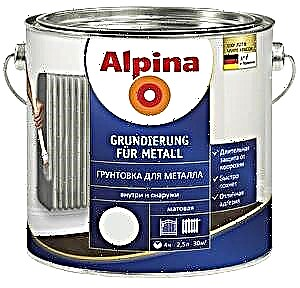 Stabilizers of corrosion products. They accelerate the transformation of unstable hydrates of iron oxide into compounds of a more stable type - magnetite and others.
Stabilizers of corrosion products. They accelerate the transformation of unstable hydrates of iron oxide into compounds of a more stable type - magnetite and others.- Corrosion Product Converters. Upon contact with a metal surface, they begin to interact with rust, converting it to salts with a low degree of solubility - phosphates of barium, zinc, manganese.
- Penetration compounds. They are characterized by high penetration, when applied to a metal surface with traces of corrosion, they cause compaction of the latter.
- Primers-modifiers. Create the basis for applying the basic paintwork composition.
It is advisable to use substances only on condition that the area of rust or scale is not more than 30% of the metal surface.
In all other cases, it is impossible to guarantee a positive effect from their use. There are formulations that can be applied directly to traces of rust. However, it is still advisable to prepare a metal surface before the procedure, removing corrosion products from it. This will increase the life of the entire structure.
Domestic primers modifiers
Today in stores more than 50 types of primers-modifiers produced by domestic companies are presented. You can meet even more compounds of imported production.
Among all this diversity, the following compositions can be distinguished, which over the years of practical application have shown their best side.
Primer with corrosion converter EVA-0112
 A system containing two basic components, offered in separate packages - 85% phosphoric acid and a base. Before application, these components are mixed in a ratio of 3: 100. The finished composition should be used within the next day. The maximum result from using this primer is guaranteed only if epoxy-based paint is applied to this coating.
A system containing two basic components, offered in separate packages - 85% phosphoric acid and a base. Before application, these components are mixed in a ratio of 3: 100. The finished composition should be used within the next day. The maximum result from using this primer is guaranteed only if epoxy-based paint is applied to this coating.
Primer-rust modifier EP-0180
Here, the basic components are the base and hardener. The primer composition begins to be prepared half an hour before application, for which the ingredients provided for by this system are mixed in a ratio of 7.5: 100. The finished composition remains usable for 8 hours. It is suitable for treating surfaces that have been unevenly corroded. After applying this paint primer on metal, a durable film appears, which can cope with the role of a full-fledged protective coating, already having a red-brown color.
Stainless steel soil
A corrosion protection primer based on a corrosion inhibitor and aluminum filler. They are used for processing not only structures with rust products, but also for clean metal surfaces. The special composition allows it to be applied directly to traces of rust. The primer has high moisture resistance and excellent insulating ability. Able to replace the finish coating, after application forms a semi-matte film.
Choosing a primer for metal
To ensure maximum protection of metal structures, including those that are operated on the street, it is important to choose the right primer. To solve this problem, you can use various mixtures, which can vary among themselves in the composition and ratio of basic components.
It can be both ready-to-use formulations and concentrates that require preliminary preparation.
In order not to make a mistake with the choice of primer, It is necessary to pay attention to the following points:
- The quality of the metal surface. There are compounds designed for application to ferrous steel, non-ferrous metal and various alloys.
- Operating conditions for metal structures. The latter can function inside the building or on the street. Be sure to take into account temperature and humidity differences.
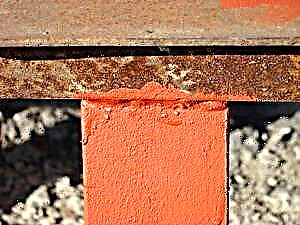 Features of anticorrosive agents. In addition to the components contained in it, it is necessary to pay attention to the nature of the formation of the film, compatibility with certain paints and varnishes.
Features of anticorrosive agents. In addition to the components contained in it, it is necessary to pay attention to the nature of the formation of the film, compatibility with certain paints and varnishes.- Drying time. For outdoor work, alkyd mixtures are usually used, and for internal work - acrylic.
- The presence of corrosion products on the surface of the metal product and the features of their location.
- The toxicity of the primer mixture. For outdoor work often have to use more toxic compounds. Therefore, it is imperative to take care of protecting the skin, respiratory system and eyes.
- Profitability. Preliminarily, it is necessary to calculate the amount of primer mixture needed to apply per square meter of surface.
To protect the surface of a metal product with traces of corrosion from the appearance of new ones, it is best to purchase modifier primers. They will save you from having to perform additional operations. Thanks to them, you immediately strengthen the areas weakened by rust and at the same time create a preparatory anticorrosive layer for subsequent staining.
It should be borne in mind that in each case, the service life of the applied primer layer will be different. It depends on several factors - the brand of composition, purpose, operating conditions of the metal product, the area of surface damage by corrosion. On average, this period can be from 12 months to 15 years.
 The main threat to metal is corrosion. That is why, even at the production stage, all metal products, especially those that will be operated in aggressive conditions, are treated with special protective compounds. However, such a need may arise even during the operation of metal structures. Choosing the right primer for a product that already has corrosion products on its surface is not an easy task.
The main threat to metal is corrosion. That is why, even at the production stage, all metal products, especially those that will be operated in aggressive conditions, are treated with special protective compounds. However, such a need may arise even during the operation of metal structures. Choosing the right primer for a product that already has corrosion products on its surface is not an easy task.
It is important that the mixture obtained not only creates a protective coating on the surface, but also strengthens the areas already affected by corrosion. It is these characteristics that must be considered first of all when choosing a primer. At the same time, one must not forget about the exact conditions under which it is planned to operate a particular metal structure. Indeed, for the treatment of a conventional tank under water for a summer residence and metal structures, which will be used in aggressive conditions of industrial production, one will have to purchase completely different primer mixes.
The main advantages of priming
Thanks to the use of a good, high-quality primer, the negative influence of various factors is minimized, the protection of metal surfaces is ensured, and the operational life of the products is extended. In addition, a primer for metal gives the following advantages:

- the primer improves the quality and adhesion of the decorative coating to the structure,
- makes metal more durable
- metal products gain reliable protection against the damaging effects of rust,
- during the painting of metal paints and varnishes are saved.
Experts say that it is much better to spend time for priming during ongoing repairs before painting, and to postpone the next repair for a long time. Moreover, now you can buy a quick-drying look, significantly saving the time of priming. Soil is much cheaper than regular painting after a short period of time, and the financial cost of repairing metal products, so you need to be primed.
Types of primers

Today in the markets and in shops there are many varieties of primers for applying to metal for painting. In order for the result to be as effective as possible, the choice of primer for metal should be approached responsibly and the most suitable composition selected. There are such types of primers for metal:
- primer for non-ferrous metals, for example, aluminum, copper, brass. The primer for these metal surfaces enhances adhesion, makes adhesion to the base better and more reliable. These primers are also used for processing galvanized steel,
- for ferrous metals, for example, iron and cast iron, as well as alloys of steel and iron. The primer significantly slows down the oxidation or rusting process, because these materials quickly undergo a corrosion process. In addition, the adhesion of paints and varnishes to the base during finishing is enhanced,
- for galvanizing. The best primer for metal from galvanized steel is a composition based on organic solvents, and mixtures for processing non-ferrous metals have also proven themselves well.
- for ferrous metals, on which traces of rust are present, special rust converters must be used, in which there are certain chemical components that react with rust and turn it into a durable layer. Such primers are able to repair a damaged surface in order to work with these compounds, you do not need to pre-clean the metal from rust, you just need to remove the dirt on the surface,
- special primers used against various stains on metal surfaces that do not absorb moisture. These soils block pollution, which include grease stains, traces of soot, and so on. These compounds are used if it is not possible to clean the contaminants. If they are not primed, then some time after painting, the paintwork materials will begin to exfoliate in these places.
Varieties of primers

The most common primers for metal processing are the following mixtures:
- alkyd primers for metal. They are most often used, in comparison with other types. They are made on the basis of alkyd varnish material, to which various stabilizers and additives are added. Mixtures may be brown or gray. They belong to the category of quick-drying and fairly strong soils, protect the metal base both from the inside and outside, create a strong base that can be covered with almost any finishing material,
- phosphoric acid based primers are usually used for structures that already have rust. These primers effectively eliminate corrosion by creating a protective layer and restoring the surface, so that the adhesion index is significantly improved.With the use of such mixtures, it is possible to effectively strengthen the destroyed base, stopping corrosion processes,
- Acrylic primers make it possible to level the base and increase adhesion. These water-dispersed soils have a minimum drying time, are quick-drying. Acrylic primer for metal is completely safe for human health, it can be processed indoors, it is suitable for application on both ferrous and non-ferrous metals. Not all acrylic mixtures can be painted, for example, the paint will not lay down evenly on acid primers, therefore, acid primers are applied if subsequently paint and varnish material is not used,
- passivating primers significantly slow down corrosion processes, are applied to metal products located in the open air. These compounds perfectly protect structures from the harmful effects of the atmosphere, their special composition is designed so that they continue to protect the surface of the metal, even when moisture or water breaks the protective film,
- Epoxy primers effectively protect against high humidity and negative atmospheric effects. An epoxy primer for metal is used to process any metalwork, as well as automobiles.
What is important to consider when buying a primer
Ordinary primer or primer for metal should be selected taking into account climatic conditions, if they will be used when performing outdoor work. And if the primer will be used for internal work, it is important to consider the toxicity indicator, especially when the primer is performed in a residential building. In addition, when choosing a primer product, the following nuances must be taken into account:
- what material will be treated with a primer - color or black,
- Is there a certificate confirming the high quality of the products,
- the soil is intended for indoor or outdoor use, can it be subject to mechanical stress,
- what kind of topcoat will be applied
- what is the primer consumption per 1 m2 of metal.
It is also necessary to pay attention to the form in which the products are manufactured, and with what tool the basis will be processed:
- if a spray gun will be used, then you need to buy a liquid composition. You can also purchase a powder or concentrated product, which is diluted in accordance with the instructions, using a solvent or ordinary water to the desired consistency. Use the spraying method effectively for large metal structures, extensive iron sheets. It is important to remember that water-dispersion-based mixtures are quick-drying, therefore, the next coat should be applied almost immediately, but only after the previous coat has dried,
- if the primer is mettalized using a roller, then any form of release is suitable. The roller applies the mixture economically enough, distributes it evenly,
- the brush can also be used to apply the mixture, however, this method is the most costly and uneconomical. Hard-to-reach spots, as well as small areas, are processed with a brush
- aerosol cans are very convenient to use, however, they have a small volume and cost significantly more than compositions in banks or cans. If you process large areas, you will have to buy a lot of spray cans.
When purchasing a primer for metal, you need to familiarize yourself with the instructions and consider what the consumption is per square meter. Depending on the flow rate, you need to calculate how much soil is needed in order to process the entire structure. In addition, if the composition has toxic substances, it is immediately important to purchase personal protective equipment, such as gloves, glasses and a respirator.
Application Features

In order for the primer to perform its functions as efficiently as possible, it must be applied correctly. It is important to adhere to the following recommendations:
- Before starting to apply the mixture to the metal surface, it is important to clean it of any contaminants, including the remnants of old paint, dirt, traces of corrosion and rust. If a rust converter is used, then it does not need to be removed from the surface,
- when old, dried paint is very difficult to remove from the base, you can use a special softener. When it is applied to old paints and varnishes, they are very easy to clean from the surface,
- when all dirt has been removed, it is important to polish the substrate to a shine, and then rinse it. If non-ferrous alloys are processed, they do not need to be polished, they should be washed and dried well enough,
- before starting priming the metal, if necessary, degrease the base, this must be done in the presence of greasy, oily stains. Degreasing is carried out either by special electric machines, or by ordinary cotton cloth and degreasers, for example, solvents. Thanks to this procedure, the adhesion index of the metal will be significantly increased,
- after preparation of the base, the metal begins to be primed on a clean and dry metal surface. The primer liquid is distributed on the base with a thin layer; puddles or sagging should not be allowed. When the first coat dries, subsequent coatings can be applied. Experts recommend applying two thin layers than one thick overlay of the primer,
- after the last layer has completely dried, it is necessary to immediately begin processing the structure with finishing paints and varnishes. If this is done in a few days, dust may settle on the surface, which will significantly reduce adhesion and the adhesion of the paint to the product will be impaired.
If you comply with the phased implementation of the above work and carefully, slowly, priming the metal base, the metal structure will be qualitatively protected, its service life will be significantly extended, the metal surface will receive high-quality protection from aggressive and adverse environmental influences.
Purpose and use
The composition, designed for priming metal structures, levels and protects the surface of the object from corrosion. This solution is purchased both for application at home and for industrial premises. The advantage of using a primer is that when applied to a metal, it creates a protective film that is resistant to moisture and temperature.

Composition and specifications
The components that make up the primer are special substances that can penetrate the metal structure and inhibit the oxidation process.
Today, manufacturers offer a wide range of primers suitable for different types of metal surfaces. Priming is the most effective way to protect an object from rust.
Consumption per 1 m2
The primer is applied to a metal surface in order to carry out preparatory work for further staining. Pre-treatment allows the paintwork to last much longer. It is very important that the composition corresponds to GOST. Quality indicators of the mixture are:
When coating a metal surface, the consumption per 1 m2 is calculated at a rate of 80 to 120 ml.
Features
When choosing a solution for priming, the buyer should consider the features of metal surfaces. On the shelves of specialized stores there is a wide selection of tools that differ in the type of processing:
- For non-ferrous metals. Such a composition is applied to an aluminum, copper or brass surface. The tool improves adhesion, makes adhesion to the base strong and reliable. Suitable for galvanized steel,
- For ferrous metals. Soil is used to work with cast iron and iron. The solution resists the oxidation process and the formation of rust. In addition, the composition increases the adhesion of the coatings with the base during finishing,
- For galvanizing. The mixture is specially created for working with galvanized steel. It is based on organic solvents,
- For ferrous metals with traces of corrosion. This product includes components that can react with rust. It restores the surface, and does not require preliminary cleaning of the metal,
- Special blends. Solutions used against some stains on metal. Such primers are intended for application to objects containing soot, traces of grease and other contaminants. Lack of treatment of the problem surface can provoke the detachment of the coloring composition.

Advantages and disadvantages
Processing a metal with a correctly selected composition has several advantages:
- Saves paintwork,
- Improves the adhesion of paint and metal surfaces,
- Creates a protective layer against corrosion,
- Acrylic primers for metal are absolutely safe for humans and can be used indoors,
- Epoxy primers for metal have high strength.
Professionals argue that the minimum cost associated with applying the soil can for a long time delay the repair work.
Necessary tools and materials
Having chosen a primer suitable for metal processing, it is necessary to take into account all its features and select the appropriate tool that will be required for applying the composition:
- Spray a metal surface with a large staining area will help the spray gun. This device is indispensable when working with large objects made of iron.
- The use of a roller is possible for any kind of primer mix.
- It is undesirable to use a brush as an independent tool - it significantly increases the consumption of material. It is preferable to give it when applying soil in hard-to-reach places.
Attention! Today there is an opportunity to purchase soil in spray cans. The aerosol composition is very convenient to apply, since it does not require an additional tool for work.

Application tips and tricks
- Do not buy the first primer mix you get. To make the right choice, you must carefully study all the characteristics of the metal.
- In some cases, for better protection, it is recommended to apply a layer of waterproof coating. As a rule, this is done when using a frost-resistant composition, which processes objects located in fresh air.
- Stick to temperature. Regardless of the soil chosen, it must be applied at rates from -10 to +27 degrees Celsius.
- Despite the specifics of the primer, carry out work in personal protective equipment. Take care in advance of purchasing glasses, a respirator and gloves. The use of protective equipment is extremely important when using a spray gun.
- Observe the operating conditions of the soil, do not use it at the end of the expiration date.
Phosphating
The basis of the mixture are solvents and orthophosphate. This type of primer is a universal solution that is suitable for processing any metal structures. The composition is recommended to be applied to objects not subject to corrosion.
Phosphating primers have good adhesion, during operation they create a porous layer on which the paintwork material easily lays. Typically, such solutions are used to treat steel, aluminum and galvanized surfaces.
The compositions go well with paints having an alkyd, ethanol and epoxy base. The phosphating primer is characterized by high heat resistance, it withstands the temperature range from +150 to +220 degrees Celsius. The surface after applying the mixture acquires dielectric properties. The disadvantages of the soil include low corrosion protection.
Passivating
The main components of the composition are salts of chromic acid: chromates of strontium, barium, calcium, lead, zinc. At the same time, chromates are common passivators. They tend to make the transition of metals from an active to a passive state. After priming, the coating will not interact with the environment.
Attention! A high concentration of chromium salts in the passivating solution is very important, since their lack can enhance corrosion processes.
Compounds, the main part of which are dichromate salts, are well suited to protect aluminum structures. When working with ferrous metals, ordinary chromates are sufficient. As a rule, strontium and zinc compounds become components of a passivating primer.
A high concentration of salts provides a high-quality protective coating.

Transformative
The primer for metal products may be applied to a surface containing traces of corrosion. The composition converts rust into a kind of compound that undergoes rapid destruction.
The components of the mixture are surface-active substances, providing easy penetration of soil particles through the layers of corrosion.
The combination of the transforming composition with a passivating material is optimal.
Tread
Products containing magnesium, zinc and aluminum powders fight rust. The quality of the soil is directly dependent on the concentration of the above components. The higher their number, the better the soil.
The most popular material used for pretreatment of metal structures is considered to be a composition with zinc dust.
Alkyd
The product is an insulating and passivating primer. Its main purpose is to combat the effects of corrosion.
The components of the soil are fillers based on iron minium, white, etc.
The tool is a versatile mixture that provides good adhesion with finishing materials. It is possible to use a solution for alkyd coloring compounds.

Quick-drying primer for metal
There is an opinion that quick-drying soil is any solution for priming, characterized by quick drying. In fact, this statement is only partially true.
Quick-drying primer designed to treat a metal surface requires for complete drying from 20 minutes to 12 hours. Such alkyd-based mixtures are created and include organic solvents. It should be noted that the drying time of ordinary alkyd solutions for priming and coloring compositions takes about 2-3 days.
Most often, the product is used in the following applications:
- Engineering,
- Shipbuilding,
- Building,
- Production of railway and agricultural machinery.
Consider the basic properties of a quick-drying mixture on the example of soil GF-021 from "TEKS":
- Corrosion protection. The anti-corrosion properties of the composition create a film that prevents the occurrence of rust, which is the main feature of the primer,
- Good adhesion. The preliminary use of the composition before staining can significantly improve the adhesion of coatings with the base,
- Resistance to weathering. For some phenomena, the function is not long-term, for this reason it should not be postponed seriously.
- Resistance to chemicals. The coating tolerates the effects of substances such as: oil, salt, gasoline, etc.,
- Hiding power. The composition provides uniform application of color to the work surface,
- Universality. Quick-drying soil is suitable for outdoor use and indoor painting.It can be used on surfaces made of metal, wood, concrete,
- Strong smell. The mixture has a pungent odor caused by organic solvents. Due to this feature, when working, it is necessary to use personal protective equipment.
Overview of popular manufacturers
The most popular primers on the building materials market are the following:
- Corrosion-resistant primer for metal Rosteks (Tikkurila),
- Corrosion-resistant primer for metal Rostex Super (Tikkurila),
- Corrosion-resistant primer for metal Special Metal Primer,
- Corrosion-resistant primer for metal Grit Black,
- Anticorrosive primer for metal Rust-Beater No. 1 (Hammerite),
- Primer for metal GF 021.

 Protectors. Their basic component is paint or enamel containing dissolved tiny metal particles. After the primer dries, a thin, strong film appears on the surface, providing the metal with reliable protection against any external influences. Such compositions are most common in the processing of metal structures that are constantly in the water.
Protectors. Their basic component is paint or enamel containing dissolved tiny metal particles. After the primer dries, a thin, strong film appears on the surface, providing the metal with reliable protection against any external influences. Such compositions are most common in the processing of metal structures that are constantly in the water. Stabilizers of corrosion products. They accelerate the transformation of unstable hydrates of iron oxide into compounds of a more stable type - magnetite and others.
Stabilizers of corrosion products. They accelerate the transformation of unstable hydrates of iron oxide into compounds of a more stable type - magnetite and others. Features of anticorrosive agents. In addition to the components contained in it, it is necessary to pay attention to the nature of the formation of the film, compatibility with certain paints and varnishes.
Features of anticorrosive agents. In addition to the components contained in it, it is necessary to pay attention to the nature of the formation of the film, compatibility with certain paints and varnishes.